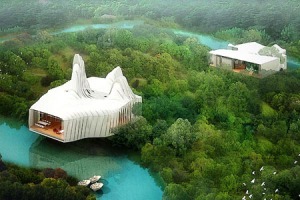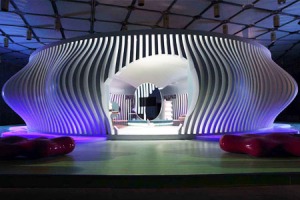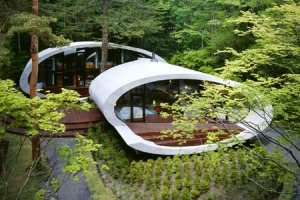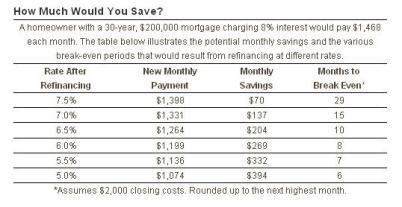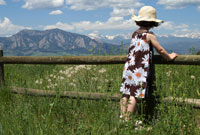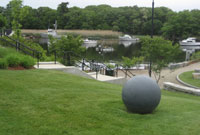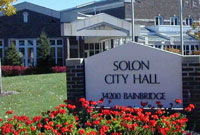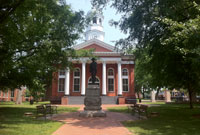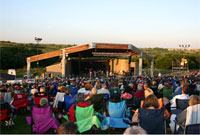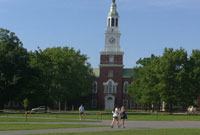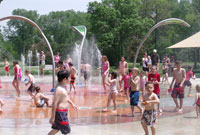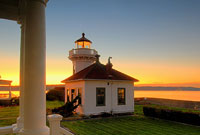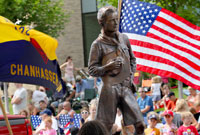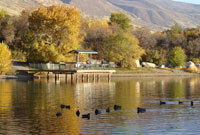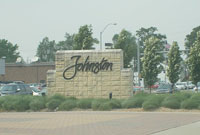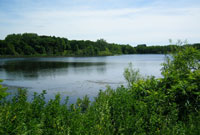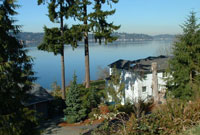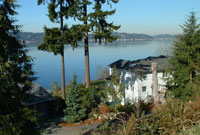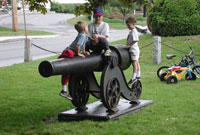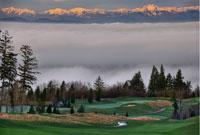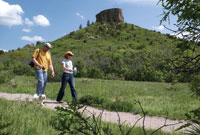Savings-minded travelers may not always be able to spring for the loftiest hillside hotels, but a single meal at a spectacularly situated restaurant can be a worthy splurge. From glacial peaks to ancient rain forests—even an underwater dining room in the Indian Ocean—we’ve rounded up 12 unforgettable places to pick up a fork.
The untamed Andes from the southern-most city in the world.
You might not expect to find world-class French food in a frontier city that’s more or less at the ends of the earth—which makes Chez Manu an even more pleasant surprise. Set on a hill about a mile north of Ushuaia, the capital of Tierra del Fuego and the southern-most city in the world, the restaurant first impresses visitors with its remarkable perspective on Beagle Channel. And then there’s the food. Naturally, fish figures prominently—such as black hake, salmon, and herring, to which expat chef Emmanuel Herbin applies his own suitably French twists (seasoning with anise and herbs, say). Also worth a try: Herbin’s takes on Patagonian lamb and Fuegian rabbit, served in an aged mustard sauce.
Best Deal: Centolla (king crab) is abundant here, and preparations such as centolla gratinada “Chez Manu” come in well below splurge territory ($24). 2135 Fernando Luís Martial Ave., Ushuaia, Argentina, 011-54/2901-432-253, chezmanu.com, entrées from $15.
Primordial paradise in the midst of the jungle.
Julaymba Restaurant brings travelers right to the heart of the world’s oldest rain forest. The 40-seat restaurant’s terrace juts out over an ancient freshwater lagoon while tangled vines drape from the canopy above. From every direction, diners hear the sounds of some 430 species of birds, plus tree frogs, wild turkeys, and wallabies thumping through the brush. The distinctly Aussie menu incorporates pepper berries, wattle seeds, and other native foods used by the local aboriginal Kuku Yalanji people, many of whom work in the restaurant. Make like a local, and order either the smoked crocodile or the kangaroo steak.
Best Deal: The lunch-only fish-and-chips special—it’s made with local, line-caught barramundi and chips ($17). Daintree EcoLodge & Spa, 20 Daintree Rd., Daintree, Australia, 011-61/7-4098-6100, daintree-ecolodge.com.au, entrées from $29.
Over-the-top architecture in the world’s most outrageous city.
For all the glamour, glitz, and grandeur that have come to define Dubai, Pierchic stands out for being just the opposite: understated, low-slung, and vernacular in its architectural style. Its wooden beams blend right in with the simple, 500-foot jetty that connects the over-water dining room to Jumeirah Beach and provides enough distance to take in the man-made Palm Jumeirah Island and the full height of Burj Al Arab’s 1,000-foot-tall glass sail. Despite the restaurant’s waterfront location, much of its top
Best Deal: The seafood lover’s degustation menu, which includes an appetizer, an intermediate and a main course, and a dessert ($43). The menu changes daily, but expect options such as brown shrimp panna cotta, pan-fried oyster, and crème brûlée. Served daily from 1–3 p.m. Al Qasr Hotel, Madinat Jumeirah, Dubai, 011-971/4-366-6730, jumeirah.com, entrées from $27.
Scuba views from beneath the ocean.
It’s like dinner theater for the dive set—and there’s not a bad seat in the house. Ithaa is located 16 feet below the surface of the Indian Ocean. Its tunnel shape and glass walls reveal a breathtaking seascape of unspoiled coral atolls, schools of parrot fish, and giant stingrays to 12 lucky diners. The menu is rich with decadent dishes like caviar, line-caught reef fish and rock lobster, but if you’d rather not look out the window for your ordering inspiration, seared veal tenderloin and button-mushroom soup make for suitable substitutions. And while the four-course lunch menu is undoubtedly a splurge, it’s still cheaper than getting certified to scuba. Note that tables can only be reserved two weeks in advance.
Best Deal: An 11 a.m. daily cocktail hour opens up the space to curious travelers who can’t quite justify the cost of a meal. Conrad Maldives hotel, Rangali Island, Maldives, 011-960/668-0629, conradhotels1.hilton.com, six-course dinner from $320 per person
A Parisian panorama from one of the city’s most iconic department stores.
In a city where shopping has been elevated to an art form, it’s fitting that one of the best roof-terrace restaurants sits atop the iconic Printemps department store, in the 9th arrondissement. Serving simple bistro fare (think quiche, soups, and toasted spinach-honey-and-goat-cheese sandwiches) to Parisians and tourists alike, Le Déli-Cieux also delivers 360-degree views of the city’s centuries-old tin rooftops and its greatest architectural icons: the Arc de Triomphe, the Sacré Coeur, and bien sur, the Eiffel Tower.
Best Deal: Well-priced wine, champagne, and beer ($7) flow freely on Thursday evenings, when the terrace is open until 10 p.m. Printemps Home Store, 64 Haussmann Blvd., 9th floor, 9th arrondissement, Paris, France, 011-33/42-82-62-76, departmentstoreparis.printemps.com, gazpacho from $6
A view of the country’s most famous gilded square.
Bosco Bar hits a rare sweet spot: There is a bona fide social scene, plus impressive sightlines and prices you can actually stomach. While the shopping center itself draws wealthy Muscovites browsing Hermès and Armani, savvy travelers stake out seats in the 1970s-inspired bar, where they can see Lenin’s mausoleum, the Kremlin, and St. Basil’s Cathedral all at once. The menu straddles the new/old divide, with inventive salads (quail with beets and roasted foie gras; smoked salmon, arugula, and potato) and traditional favorites such as beef Stroganoff and borscht.
Best Deal: Red Square, red soup: A bowl of borscht goes for $16. GUM Department Store, 3 Red Square, Moscow, Russia, 011-7/495-627-3703, bosco.ru/en, entrées from $11.
A lofty view of a sparkling metropolis.
The 63-story OUB Centre is crowned by 1-Altitude, a three-level venue that offers the best views in the city—plus main-course-quality bar snacks such as wood-fired pizzas, satay platters (spicy Thai beef, chicken, and pork), and Turkish flat bread with dips. The cocktails run the gamut from classic (mojito) to creative (The Narcissist is a tempting combination of Russian Standard vodka muddled with peach, freshly squeezed lime, and rosemary-infused raspberries). The year-old hotspot is always buzzing with young Singaporean professionals, who are keen
Best Deal: Good selection of affordable New World wines, from $13 a glass (cocktails start at $16). OUB Centre, One Raffles Pl., 63rd level, Singapore, 011-65/6438-0410, 1-altitude.com, pizzas from $20.
From the heart of a chocolate plantation.
Calling all chocolate lovers: Boucan Restaurant might just be your dream come true. Every last item on the menu incorporates some form of cocoa, from a green salad tossed in white chocolate dressing to sautéed prawns with chocolate tapenade and, of course, desserts: a chocolate tart, cacao crème brûlée, and espresso-and-dark-chocolate mousse. Even dreamier than the indulgent dishes? The jungle-draped views of the Piton Mountains, lush, twin-peaked mountains that rise almost 2,600 feet above sea level on the volcanic island’s southern coast.
Best Deal: Every dinner reservation from now until December 1, 2011, comes with a complimentary cocktail from a menu that includes chocolate daiquiris, cacao Bellinis, and cacao-pulp martinis (a $10 value). Hotel Chocolat, Rabot Estate, Soufrière, St. Lucia, West Indies, 011-758/457-1624, thehotelchocolat.com, entrées from $15.
Alpine splendor overlooking Lake Geneva, Mont Blanc, and the Matterhorn.
Talk about making the rounds. Patrons of Kuklos, a futuristic, glass-walled restaurant in the Bernese Alps, don’t have to choose between scoping out Lake Geneva, Mont Blanc, or the Matterhorn during their meals. All they have to do is be patient. Every 90 minutes, the circular second-floor dining room makes a full 360-degree rotation. The menu skews traditional—with Gruyère-and-vacherin fondue and rösti, a Swiss riff on a potato pancake—and the dress code is casual, for a clientele of mostly skiers and mountaineers.
Best Deal: The “panorama gourmand” package covers round-trip gondola fare (normally $26 per person) and a three-course meal ($80) for two for $160—a savings of $52. 1854 Leysin, Switzerland, 011-41/24-494-3141, teleleysin.ch/en, entrées from $25.
Iconic buttes and majestic spires.
“Monument Valley is the place where God put the West,” remarked John Wayne, who helped put the valley on moviegoers’ maps by filming Stagecoach there in 1938. Seventy-plus years later, the landscape is just as cinematic. A large bay window overlooks East and West Mitten Buttes, so named for their resemblance to the woolly hand warmers, and natural light floods the space all day. Ambitious early birds can watch the sunrise from one of the few tables lined up along the window (the restaurant opens at 7 a.m.). But arriving later has its benefits, too—like tasting Chef MacNeal Crank’s updated takes on his grandmother’s traditional Navajo recipes, such as fry-bread tacos or red chile posole, rich with buttery hominy.
Best Deal: The all-you-can-eat breakfast buffet ($6). Monument Valley Tribal Park, U.S. Hwy. 160 and 163, Monument Valley, Utah, 435/727-5555, monumentvalleyview.com, entrées from $12.
Theres even one close by, here in the states. how convenient!







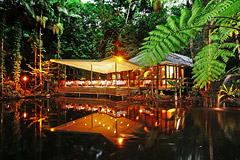
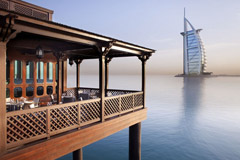
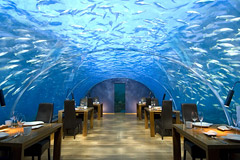
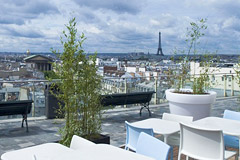



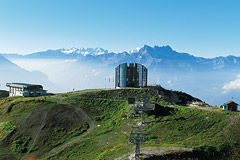
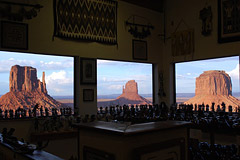
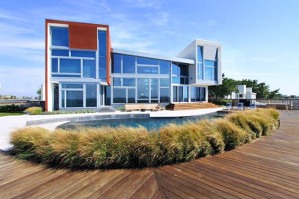
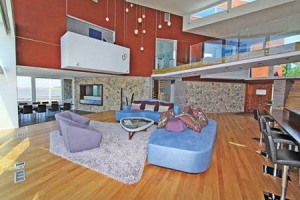
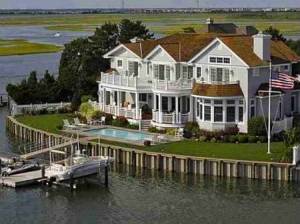
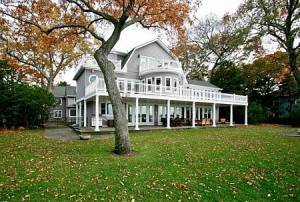
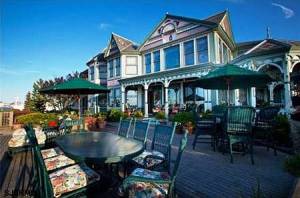
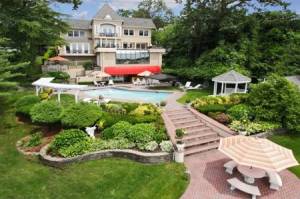




 Durham, N.C. – amid Research Triangle – is the No. 5 geek city
Durham, N.C. – amid Research Triangle – is the No. 5 geek city



